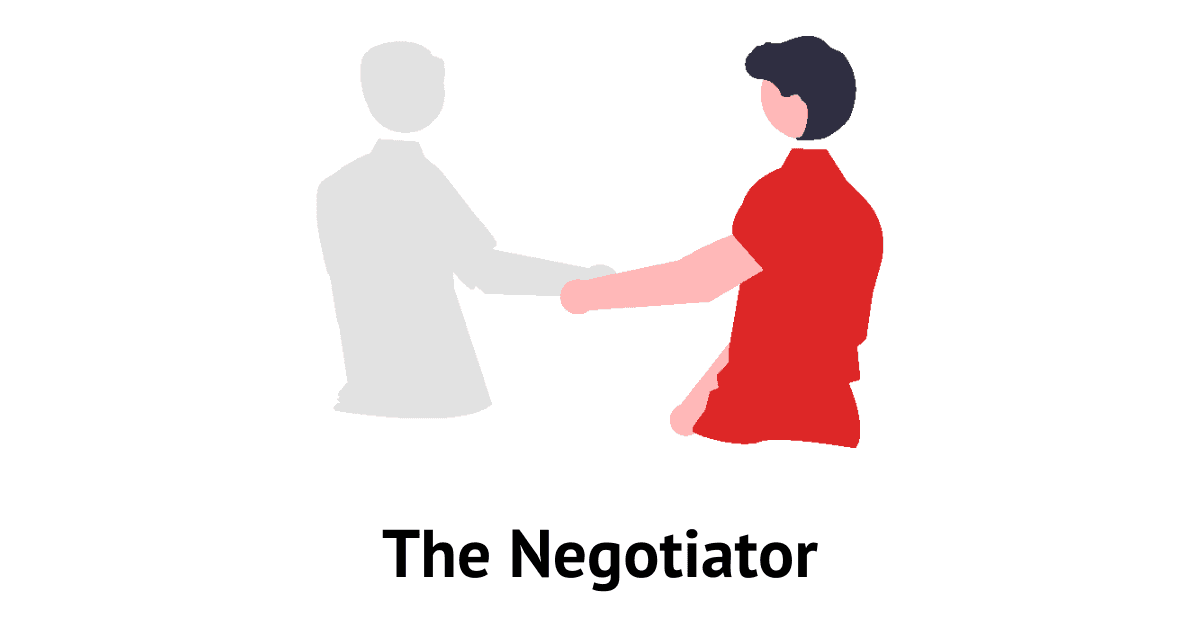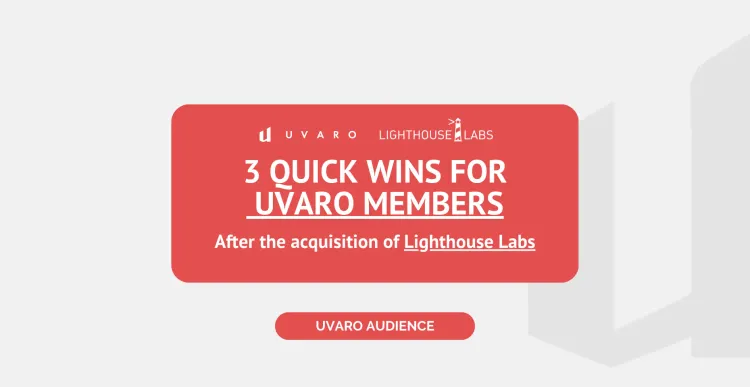Top 3 Types of Customers You'll Meet in Tech Sales
As a tech sales rep, you're likely to come across 3 types of customers: the negotiator, the chatterbox, and the know-it-all. Find out more about each here.

Sep 21, 2022
Every industry has a variety of types of customers, both interpersonally simple or more complicated depending on the individual. But tech sales can be particular. Not only are you dealing with cutting-edge technology that pushes the world forward, but also with a diverse mix of characters and types of customers hoping to buy from you.
If we want people to listen, we have to speak their language.” When people don’t meet our communication expectations, things can become tense. Have you ever gone to a museum and had your eyes glaze over as the guide went into mind-numbing detail? Or maybe a doctor spoke to you in a condescending tone and actually kept you from the purpose of your visit?
That’s why it’s essential to adapt your sales pitch for a customer’s needs, no matter what.
Sometimes you get customers that push your patience and wind you up. Even though it’s almost always unintentional, it can be hard to keep your cool and adjust. But by preparing for these clients in advance, you’ll be able to keep a level head and not only get the sale but start a budding business relationship.
To be successful, you need to make sure you’re prepared for every client and all types of customers. They should leave every interaction feeling heard and understood. Not only do you want to land a sale, but it’s more likely that you’ll grow a business by retaining customer relationships.
The Know-It-All
What are they like?
You’ve been hired because you’re an expert in your field. You’ve learned the specs of your product and know the optimal uses of it. This makes it all the more frustrating when a know-it-all customer comes in and hits you with the Well, actually…” It’s unnerving and can fluster you. Maybe even cause you to second guess yourself and your knowledge.
A great example of a know-it-all customer is Sheldon Cooper from the Big Bang Theory. He constantly undermines the intelligence of specialists to explain why they are wrong and why his preference is actually the best one. At one point in the show, Sheldon even decides to take matters into his own hands and acts as a shop assistant, telling customers which tech hardware they should buy. It’s no wonder his character is so viscerally disliked at times across the internet.
But with context, we can understand the intention behind a character like this one. Oftentimes, the know-it-all may, in fact, know it all. The one thing they may not know is your product. Remember: You have all the facts they need to make an informed decision.

How can you sell to a Know-It-All?
1. Stay on task
These types of customers thrive on fact and technical spec. Keep your descriptions specific and compact. They’ll often try to catch you out, so keep the opinion discourse to a minimum and instead focus on the task at hand: explaining the benefits of your product.
2. Discovery is essential
If your prospecting has led you to the conclusion that their company is in need of your product or service, then there is a good chance the Know-It-All is looking for your business. Your job during discovery is to nail the specific reason why they need you and negotiate your way into fulfilling that need.
The Know-It-All most likely already has a specific tech solution in mind, and they are extremely unlikely to be swayed by bells and whistles. Keep it simple, find their need, and then use facts and tech specs to show them you can.
3. Provide comparables
It’s crucial to provide comparables fairly early in your interaction. In some cases, the Know-It-All may not know the best path forward. You may believe you know a better fit for their needs. The best way to combat this tension is to show both options and have the client choose after laying down the facts,
In an empathetic, approachable way, go through each spec one by one showing how each product differs from the other. This should allow them to make an informed choice without feeling belittled or undermined. At the end of the day, you know your product, but they know their company.
So next time you get a Hermione Granger, Amy Santiago, or Ross Gellar shopping around for your products, you might feel more confident showing them options.
The Chatterbox
What are they like?
Have you ever seen Gilmore Girls? Lorelai can talk for days, and no one else can get a word in edgewise. And usually, 90% of what she’s saying is just filler. This is one of the most common types of customers you’ll experience during your time in tech sales. You might hear terms like Chatty Cathy” tossed around. You’ve most likely been on the phone with someone who just won’t let you leave.
There are a few reasons why customers may be keeping you on the line:
- They are nervous about making the right decision
- They are super excited to buy one of your products
- They are an oversharer
- They are naturally hyperactive
It’s vital you understand that they aren’t there to annoy you, but that there are valid reasons for their word vomit.

How can you sell to a Chatterbox?
1. Read between the lines
Somewhere in their initial 5-minute monologue, they will have given you a pretty solid picture of what they’re looking for, even if they don’t know which exact product would fulfill their needs. Learn to cut through the fluff and pick out the key details that will help you make the best sale.
Think of an overzealous conversationalist as a discovery goldmine. While much can feel like small talk or gossip, use the opportunity to get to know how your client works, their values, and their needs. If they feel frustrated by how often their computer seems to crash when new software is installed, and they’re talking on and on about poor customer service from their last internet provider? You’ve learned they want up-to-date software and a strong customer success rep on the other end of the line!
2. Redirect
You’ll need to deploy an element of tactful restriction. Even if they talk it through, they’re unlikely to have come any closer to a decision. Instead of indulging further chitchat, politely bring your client back to the matter at hand. Redirection doesn’t have to feel awkward. Feel free to use the conversation flow to gradually and gently bring the client back to your product. You can also offer them a bit of time to try the product on their own and come back with concerns where possible to help them make an informed choice without burning through your work time.
3, Active Listening and Empathy
Getting a word in might feel tough, but it can be helpful to use what you’ve learned about the client and repeat it back to them. Often people who keep you on the phone or in a meeting just want to make sure their needs are met, and that they’re heard. Instead of addressing the minutiae of the conversation, show you’ve been listening by addressing the underlying issues that they allude to.
What I hear you saying…” is a great way to take control of the conversation while still showing that you’re invested in the client. If they’re nervous about making the wrong choice, explain your returns policy. If they know that they can return the product if it doesn’t work for them, they will be much more likely to make a decision. This addresses the problem and leaves the customer feeling heard.
The Negotiator
What are they like?
When you hear the word negotiation” in sales it can often come with the connotation of its synonyms haggler,” penny-pincher,” or even the stereotype of the eager mustachioed pushy car salesman.” While the truth isn’t as cartoonish — nor as discriminatory — as a client, the Negotiator can be spotted from a mile away from some of the same key characteristics. Often they’ll deploy sales tactics to negotiate a cheaper price, or a special deal from you. As a Business Development Rep or even as a Customer Success Manager or Account Manager, you may not have the power to offer discounts or additional assets.
This person believes that their charm supersedes the price on the tag. They may use persuasive storytelling, set their own deadlines, and even give their own discounts” — though not financial ones — to sell you their company as a client.
Think Barney Stinson from How I Met Your Mother. He sees the world as his playground, where everyone will eventually bend to his will. While these types of customers can be extremely persistent, you have the skills to make the sale at full price, or even upsell!

How can you sell to a Negotiator?
1. Double up on prospecting
After an initial phone call, you know you’re dealing with a Negotiator. This is an opportunity for you to double down on your research. Make sure you know who you’re dealing with inside and out. Take the time to find their exact needs and how you meet them.
In conversation with the Negotiator themselves, use the information you learned to keep on task, and explain every benefit of your product and how it will positively impact their day-to-day workflows. The Negotiator wants a deal and often if you can convince them that your product — with all its organic benefits — is enough of a deal.
2. Know your competitors
Often a Negotiator will use your competition by comparing benefits to see if you can price match or add additional pressure on you to offer them a deal or discount. They may threaten to find an alternative deal with a competitor in a tactic to get you to waver. Don’t take the bait. Restate the benefits of your product and explain how your product fulfills the client’s needs.
Do not disparage your competition — badmouthing can be easily misinterpreted and is more likely to threaten your relationship with the client — but make sure you are informed on the competition and how your product is a better fit for your client base. Feel free to compare your own products internally to show variety and when a Negotiator mentions a competitor, show that your product fulfills that need and more!
3. Set your boundaries
The key to dealing with a Negotiator is to explain — in no uncertain terms — that your prices are final and there is no wiggle room. Eventually, they will understand that your price is your price, and hopefully respect it. If not, they will go elsewhere, which is usually an indicator they weren’t particularly interested in buying your product to begin with.
Improve your tech sales skills
Dealing with different types of customers can feel daunting, but it’s not as scary as you think. Usually, understanding why different types of customers act the way they do goes a long way to finding sales solutions that work for you!
You already have the skills you need to be successful in tech sales. Uvaro is here to help you shine. Practice all the techniques in this article and more with real-life scenarios roleplayed with peers! Check out our Career Success Catalog to learn more about our offerings and how you can reach your full potential today!





